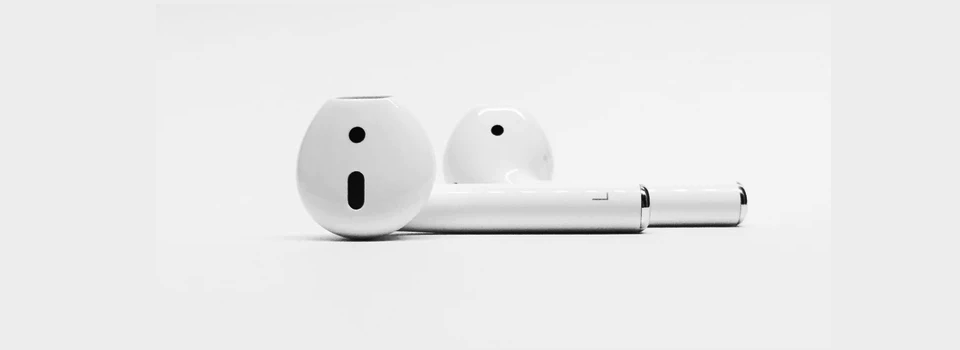Bluetooth is a great way to quickly and easily transfer content between your devices, and it’s also one of the most popular ways of connecting wireless peripherals to your Mac, such as an external keyboard or mouse. But what happens when your Mac’s Bluetooth doesn’t work as expected?
In this article, I’ll run through all the fixes you can try, the next time your Mac encounters Bluetooth-related issues.
Is your Mac’s Bluetooth even enabled?
This may sound obvious, but it’s surprising how often the simplest fixes work!
If there’s a Bluetooth icon in your Mac’s menu bar, then double-check that this icon isn’t greyed out, as this indicates that your Bluetooth connection is disabled. If you’re struggling to tell whether this icon is greyed out, then give the Bluetooth icon a click and check that it doesn’t give you the option to ‘Turn Bluetooth On.’

If there isn’t a Bluetooth icon in your Mac’s menu bar, then navigate to ‘System Preferences… > Bluetooth’ and check the status of your Bluetooth connection.
You may also get positive results from toggling your Bluetooth connection off, and then back on again.
Is the Bluetooth device switched on?
This process will vary between devices, but as a general rule you should check the device for an ‘On/Off’ switch, or any LED lights that indicate whether this device is currently up and running.
You should also check that the Bluetooth device hasn’t entered any kind of sleep or power saving mode. For example, if the device is a Bluetooth keyboard, then try tapping a few of its keys, and if it’s a Bluetooth mouse, then try pressing its buttons, to see whether your Mac suddenly recognises this device.
Check whether your Bluetooth device is running low on battery
If your Mac is refusing to recognise a Bluetooth device, or it’s lost the connection, then the device’s battery might be to blame. When a device’s battery hits 0%, that device is going to disconnect, and some devices may even disconnect when they’re running low on battery.
The easiest way to check whether a device’s battery is to blame, is to take a look at the Bluetooth icon in your Mac’s menu bar. If one or more Bluetooth-connected devices are running low on juice, then a battery icon will appear alongside the standard Bluetooth icon. You can also view a device’s current charge by navigating to your Mac’s ‘System Preferences…. > Bluetooth’ menu.
If one or more Bluetooth devices are running low on battery, then either put the Bluetooth device on charge, change its batteries, or connect the device to your Mac using a cable, where appropriate.
How many Bluetooth devices are you running?
As a general rule, the more Bluetooth devices you connect to your Mac, the greater your chances of encountering issues.
If you’re running multiple Bluetooth devices, then disconnect all of the devices you aren’t actively using, to see whether this resolves your problem.
Do you need to complete any setup?
If you’re having problems with a new device, then you may need to complete some additional setup, in order to pair this device with your Mac. You may also need to repeat this setup after updating to a new version of macOS, performing a factory reset, or if you recently updated or reinstalled any of the software associated with your Bluetooth device.
To check whether this might be the issue with your Bluetooth device:
- Navigate to ‘System Preferences…’
- Select the preference pane that corresponds to the Bluetooth device you’re having problems with, such as ‘Keyboard,’ ‘Mouse,’ or ‘Trackpad.’
- If there’s any outstanding setup you need to perform, then macOS should prompt you to complete this now.
Delete the Bluetooth.plist file
You can resolve a whole host of miscellaneous issues that may be interfering with your Mac’s Bluetooth, by deleting the Bluetooth.plist file and then restarting your Mac. As soon as your Mac reboots, it’ll automatically recreate the Bluetooth.plist file.
To delete and then recreate this file:
- Launch your Mac’s Terminal (Applications/Utilities/Terminal).
- Copy/paste the following command into the Terminal window:
sudo rm -R /Library/Preferences/com.apple.Bluetooth.plist
- Press the ‘Enter’ key on your keyboard.
- When prompted, enter your password.
- Restart your Mac.
- Navigate to ‘System preferences > Bluetooth,’ and then select ‘Turn Bluetooth On.’ Alternatively, click the ‘Bluetooth’ icon in your Mac’s menu bar, select ‘Turn Bluetooth On,’ and then check whether macOS is now recognising your Bluetooth device.
The music isn’t playing through my Bluetooth headphones!
If you have a pair of Bluetooth headphones or a Bluetooth speaker, then it’s possible your Mac’s audio isn’t being routed to them automatically.
To check whether your Mac is even trying to play sounds via your Bluetooth-connected speakers or headphones:
- Select the ‘Apple’ logo from your Mac’s menu bar.
- Navigate to ‘System Preferences… > Sound.’
- Select the ‘Output’ tab.
- If it isn’t already selected, select your Bluetooth device from the list.
- Try playing some music or other sounds, to see whether it’s now being successfully routed through your Bluetooth speakers.






Add Comment